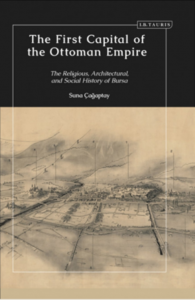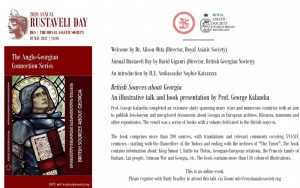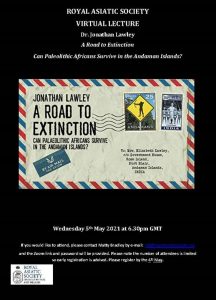Mandalay and the Art of Building Cities
The Royal Asiatic Society and the National University of Singapore Press are pleased to announce the forthcoming release of the publication, ‘Mandalay and the Art of Building Cities in Burma’ by François Tainturier.
Drawing on original Burmese texts and illustrations, recent scholarship and mapping, Mandalay and the Art of Building Cities in Burma argues that the founding of Mandalay shifted critically in emphasis and scale from a protocol that established the royal city as a ‘cosmic city’ to one that materialized the royal capital as a sanctuary.
François Tainturier is the Executive Director of the Inya Institute, a Yangon-based higher education institute dedicated to advancing the social sciences and the humanities as they are related to Myanmar. He also specialises in the study and preservation of Southeast Asia’s past built environments and the development of cartography and geographical thought in the region.
The publication has gained several positive reviews with the art historian, Timon Screech (SOAS, University of London) writing that the ‘book will be crucial for those hoping to understand urban planning in a cross-cultural, historical perspective’.
We would like to congratulate François and look forward to holding a launch to celebrate the book’s publication. The book will be available for purchase in June.
https://press.uchicago.edu/ucp/books/book/distributed/M/bo68163181.html

Round-up of this week’s events:
This week, the Society held two events with the first being a virtual book launch of Dr. Suna Çağaptay’s ‘The First Capital of the Ottoman Empire: The Religious, Architectural, and Social History of Bursa’.
In conversation with Dr. Elizabeth Key Fowden (University of Cambridge), Dr. Çağaptay discussed how her own archaeological experiences influenced the publication which tells the story of the transition from a Byzantine Christian city to an Islamic Ottoman one, positing that Bursa was a multi-faith capital where we can see the religious plurality and modernity of the Ottoman world.
For those that are interested in purchasing this publication, readers can get 35% off if you order online at www.bloomsbury.com and enter the code GLR TW6 on the first page at checkout.
Dr. Suna Çağaptay’s talk will be available to view on the Society’s YouTube channel in the coming days.

On Wednesday (28th April), we also welcomed Dr. Weipin Tsai (Royal Holloway: University of London) who gave an online lecture on ‘The courier firms that knitted the Qing Empire together: A brief account of China’s private letter hongs from late 18th century to early 20th century’.
Dr. Tsai presented an overview of the Chinese Letter Hong Project that she established which has involved making accessible online a range of material from private collections that are related to the topic. The aim of this is to help visitors learn more about this fascinating aspect of China’s communications history. More information about this project can be found here: https://www.royalholloway.ac.uk/research-and-teaching/departments-and-schools/history/news/project-website-launch/
She argued that the private letter hongs formed the largest and most significant element of China’s communications network in the late 19th century, a web of family-owned companies that established vital supply lines for information, money and goods, with a reach more fluid, adaptable and extensive than even the government’s owned military relay service.
May Events:
Please join The British Georgian Society and the RAS in a virtual celebration of Annual Rustaveli Day on May 3rd at 6pm (Uk time).
Following opening remarks by Dr. Alison Ohta (Director, Royal Asiatic Society), David Gigauri (Director, British Georgian Society) and Sophie Katsarava (H.E. Ambassador), there will be a book presentation by Prof. George Kalandia on his recent publication, ‘British Sources about Georgia’.
The book is comprised of more than 200 sources, with the aim of publishing less known and unexplored documents about Georgia in European archives, libraries and museums.
If you would like to attend this event, please email Matty Bradley at mb@royalasiaticsociety.org to sign up.

Dr. Jonathan Lawley will also be giving a lecture on Wednesday May 5th at 6:30pm (UK time) based on his recently published book, ‘A Road to Extinction: Can Palaeolithic Africans Survive in the Andaman Islands?’
Dr. Lawley will discuss the possible extinction of the Jarawa, the oldest tribe of human beings in the world in the Indian-administered Andaman Islands, in the Bay of Bengal. The impact of unbridled tourism.is having serious and damaging effects on their lifestyle and survival.
Jonathan Lawley was born in India (now Pakistan) and his family links with India go back five generations. After Indian independence, his family moved to Africa where he became the last white district commissioner in independent Zambia. His grandfather had also been a colonial administrator in the Andaman Islands in the early 1900’s.
In this book, he discusses the responsibility colonial administrators may have had for the sad plight of these palaeolithic hunter-gathers, and what the Indian government should now be doing to protect them.
To sign up for this event, please email mb@royalasiaticsociety.org by the 4th May. The publication is also now available to purchase on Amazon: https://www.amazon.co.uk/Road-Extinction-Palaeolithic-Africans-survive/dp/1838172017

